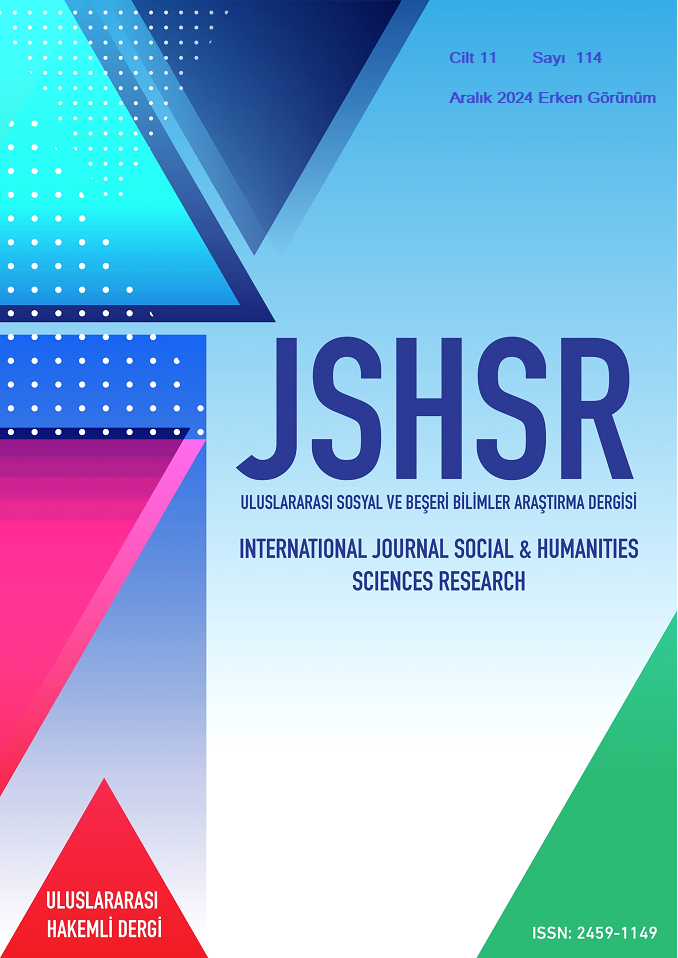Reading the Nature of the Middle Ages: Sir Orfeo versus Orpheus and Eurydice
DOI:
https://doi.org/10.5281/zenodo.14585187Keywords:
Medieval Romance, Greek Mythology, Universal Themes, IntertextualityAbstract
Sir Orfeo is a Middle English narrative that presents a reworking of the ancient Greek myth of Orpheus and Eurydice, adapting it to the cultural and ideological framework of the medieval period. The plot follows Sir Orfeo, a knight who embarks on a journey to rescue his wife, Heurodis, after she is abducted by the Fairy King. Central themes of the narrative include love, loyalty, and the transformative power of music, reflecting the medieval concept of courtly love. Sir Orfeo’s courage, displayed through his musical contest with the “Fairy King," exemplifies the chivalric ideals prevalent in medieval literature. Unlike its Greek counterpart, Sir Orfeo concludes with a hopeful and triumphant ending, characteristic of medieval romance that often emphasizes resolution and moral triumph. The text also demonstrates intertextuality, drawing on influences from both Greek and Irish mythology, and reshaping these elements within the context of medieval literary traditions. By examining the shifts in themes and cultural values, Sir Orfeo highlights the contrasts between ancient Greek and medieval views on fate, love, and the role of divine intervention. While Sir Orfeo represents a medieval reimagining of ancient themes, it also reflects the unique cultural and religious perspectives of its time. The medieval version incorporates elements of Christian morality, particularly in the depiction of the Fairy King’s mercy and the ultimate resolution of the story. Contrary to, the Greek myth emphasizes the importance of following divine will and the tragic consequences of failing to do so. Sir Orfeo is a text that bridges the ancient and medieval worlds, offering insights into how myths were adapted across cultures and eras. The story reflects the values and ideals of medieval society, particularly the importance of love, loyalty, and the power of music, while also drawing on earlier mythological traditions to create a work that resonates with universal themes of fate, love, and the human condition.
References
Bernabé, A. (2004). Poetry and mysticism in the Orphic texts. Brill.
Bowra, C. M. (1952). Greek lyric poetry: From Alcman to Simonides. Oxford University Press.
Buxton, R. (2004). The complete world of Greek mythology. Thames & Hudson.
Davenport, J. J. (2004). The Matter of Britain: The Mythological and Philosophical Significance of the British Legends. https://faculty.fordham.edu/davenport/texts/Britain3.pdf
Detienne, M. (1986). The gardens of Adonis: Spices in Greek mythology. Princeton University Press.
Edmunds, L. (1991). The wedding of Orpheus and Eurydice. Harvard University Press.
Foley, H. P. (1994). The Homeric hymn to Demeter: Translation, commentary, and interpretive essays. Princeton University Press.
Gibson, M. (n.d.). Orpheus and Eurydice. https://www.cusd80.com/cms/lib/AZ01001175/Centricity/ Domain/4937/Orpheus%20and%20Eurydice.pdf
Greeka.com. (2019). Orpheus and Eurydice. https://www.greeka.com/greece-myths/orpheus-eurydice/
Hesiod. (2006). Theogony and Works and Days (M. L. West, Trans.). Oxford University Press.
Homer. (n.d.). The Odyssey. http://johnstoniatexts.x10host.com/homer/odysseyallpdf.pdf
Jean-Francois, S. (2016). Orpheus and Juliet: Lovers or victims of love? Inlet Grove News. https://grovewatch.com/7580/news/orpheus-and-juliet-lovers-or-victims-of-love/
Kerenyi, K. (1951). The gods of the Greeks. Thames & Hudson.
Mockingbirds. (n.d.). Orpheus. https://crowspath.org/wp-content/uploads/Orpheus.pdf
Misopolinou, A. (2000). Ecstasy: A source of intimacy or applications of the Dionysiac model for Grotowski’s theatre. Body Space & Technology, 1(1). https://doi.org/10.16995/bst.285
Morford, M., & Lenardon, R. (2018). Classical mythology (11th ed.). Oxford University Press.
Pausanias. (1971). Description of Greece. Harvard University Press.
Powell, B. (2009). Classical mythology. Pearson Education.
The Editors of Encyclopedia Britannica. (2008, June 10). Orphic religion | Mystery cults, ancient Greece, Dionysus. Encyclopedia Britannica. https://www.britannica.com/topic/Orphic-religion
Wikipedia (n.d.). The wedding of Sir Gawain and Dame Ragnelle. https://en.wikipedia.org/wiki/The_Wedding_of_Sir_Gawain_and_Dame_Ragnelle
Wikipedia (n.d.). Tochmarc Étaíne. https://en.wikipedia.org/wiki/Tochmarc_%C3%89ta%C3%ADne
Zaidman, L. B., & Pantel, P. S. (1992). Religion in the ancient Greek city. Cambridge University Press
Downloads
Published
How to Cite
Issue
Section
License
Copyright (c) 2024 INTERNATIONAL JOURNAL OF SOCIAL HUMANITIES SCIENCES RESEARCH

This work is licensed under a Creative Commons Attribution 4.0 International License.


